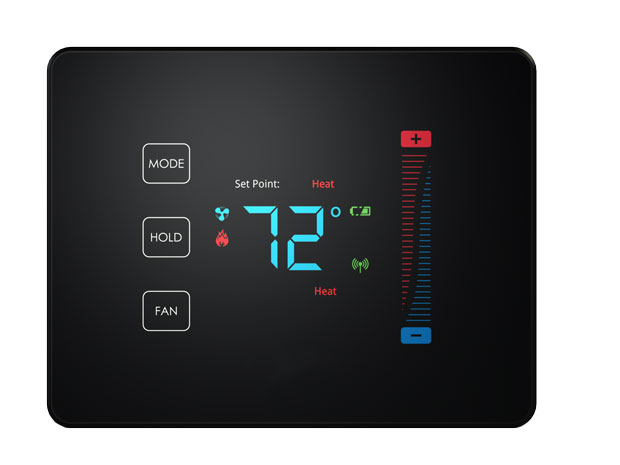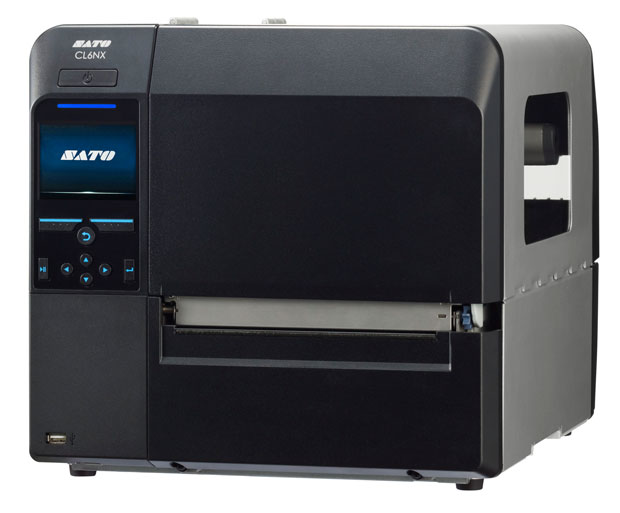
The Pearl Thermostat uses a ZigBee HA 1.2 hub to offer remote climate control. Image courtesy of CentraLite Systems.
September 1, 2015
 The Pearl Thermostat uses a ZigBee HA 1.2 hub to offer remote climate control. Image courtesy of CentraLite Systems.
The Pearl Thermostat uses a ZigBee HA 1.2 hub to offer remote climate control. Image courtesy of CentraLite Systems.According to Pricewaterhouse Coopers’ (PwC) 6th Annual Digital IQ Survey, businesses are gearing up for a fully connected future. Connected objects, using embedded software to create the Internet of Things (IoT) is emerging as an opportunity for smart products everywhere we turn. Harvesting such opportunity will depend on the planning, collaboration and integration between smart product design and embedded software intelligence.
According to the report, 20% of companies are currently investing in IoT sensors, up from 17% in 2014. Today connected sensors are being built into everything from home refrigerators to city refuse bins to vines in “smart” vineyards.
PwC further cites research from Gartner that 4.9 billion connected objects are in use in 2015—a 30% jump from 2014. This figure is estimated to reach 25 billion by 2020: Twice as many IoT devices talking to each other as there will be smartphones, tablets and PCs. What was still a futurist’s dream just a few years ago is now infiltrating every part of business. But this corroboration is not yet fully mature.
Smart Designs, Smartly Planned for the IoT
To ramp up quickly, many companies are working with outside firms as consultants and to bring in additional software and electronics engineering expertise. But first, device manufacturers need to decide the basic “smartness” characteristics of their device, says Brian Oberholtzer, vice president of Engineering at Zonoff. If the device is to be a consumer IoT device on its own, then the manufacturer might work with a company that has a remote access platform and the ability to deliver mobile apps.
“Such a device also needs to consider how it will be paired with home Wi-Fi in a way that is approachable to end users,” says Oberholtzer. “Another option is to support a wireless standard like Z-Wave or Zigbee, and in this case, a different partner may be appropriate as cloud and mobile applications are not needed but true embedded development and protocol expertise is required. If working though this decision is outside of the device manufacturer’s expertise, then an appropriate industry expert should be sought out to help determine the kind of ‘smart’ that the device will have. Power requirements of the device play a big part in the tradeoffs.”
Building A Smart Culture For Smart Products
Planning so designs are smarter requires somewhat of a culture change. Product designers need to build savvy regarding the capabilities that digital intelligence in embedded software affords. Outside service providers are one way to jumpstart the training and workflow needed for connected products.
Many manufacturing companies have very little experience with software development and aren’t fully aware of the importance of some critical features such as logging and auditing, reporting, or malicious use of the app, says Sean Lorenz, director of IoT Marketing Strategy at Xively. There are a number of systems focused on IoT projects, so companies unsure of how to handle these issues are beginning to have a larger pool to select from.
But the culture of collusion and collaboration may be shifting toward joining software developers and design engineers at the hip, as demand for IoT products grows. The staffing firm Adecco Corporation, whose markets include engineering and technical disciplines emphasizes the importance of melding embedded software with traditional engineering designs.
In one of the company’s research reports, they write: “A company that wants to move from products to smart, connected products, may need to revamp its technology stack to include not just hardware, but software, and lots of it. They will also need to address the security and infrastructure demands of connectivity.”
Integrating Hardware With Embedded Software
Design teams are challenged with building collaboration early on—before progress is made on any engineering design that might make it difficult to include both sensors and embedded software. If the relationship isn’t formed early enough, it will be more difficult to retrofit smart capabilities.
Early is better, says John Calagaz, CTO of CentraLite Systems. Embedded software engineers need to be brought into the process early. He says they are the ones who will determine, with the hardware engineers, if the design is possible given the requirements on the design side along with cost.
“A designer can create a really innovative concept, but the embedded and hardware engineers are going to determine which components are needed to make it happen,” says Calagaz. “A $50 device could easily become a $100 device if everyone assumes the design can be built as is without any consulting of the embedded and hardware engineers.”
This early cooperation is growing and embedded software firms realize the importance of developing their software with a smart product in mind.
“There is definitely growing cooperation between design engineers who design consumer products and design engineers who have, in the past, traditionally designed complex devices like medical instruments, industrial controllers and airplanes,” says Oberholtzer. “Embedded software firms are recognizing the need to adjust their tools, and their message, for these other design engineers. And while embedded software companies are changing their products to go into low-power, low-cost consumer products for the IoT, other companies like Apple and Google are also creating their own tools for this market.”
 SATO, a provider of barcode printers, leverages the Xively IoT platform to provide next-generation connectivity. Image courtesy of SATO Global.
SATO, a provider of barcode printers, leverages the Xively IoT platform to provide next-generation connectivity. Image courtesy of SATO Global.Oberholtzer highlights the importance of not becoming too dependent on big names when it comes to considering operating systems and information networks for their IoT devices.
“Lots of companies want into that opportunity because many, many devices will be sold,” he says, “and lots and lots of data will be transmitted through them. The device manufacturer can then put the intelligence and monitoring in a hub that connects all the IoT devices. Inside the hub, the manufacturer can decide to use Google or Apple or their own custom OS to control, monitor and monetize the devices and the data.”
Engineers need to also consider multiple sources in building the integration between embedded software solutions and devices. Cloud-based solutions as well as mobile technology are key considerations when mapping out smart products.
Oberholtzer says there are a range of companies and services for device manufacturers depending on the kind of device being produced ranging from embedded contractors, existing SaaS (Software-as-a-Service) providers for remote access to devices, to mobile application contractors and user experience consultants.
“It is often possible to retrofit a smart solution to an existing non-smart product but it obviously can make a better product if the vision for the smart device starts out from early stages of design with the end use cases in mind,” he says.
Generally, the functionality is determined, hardware is selected and compatible software acts within that hardware. So hardware and software engineering need to be engaged, and meet up early.
“If they’re going to be used, embedded software services should be brought in as early as possible,” says Bob Zeidman, president, Zeidman Consulting and Technologies. “Right now, the hardware needs to be determined first and the software needs to be developed based on the hardware that is selected. The embedded software developers need to be in on the hardware decisions so that they can confirm that they can meet the device requirements given the hardware choice.”
Zeidman cautions that if you choose the wrong hardware at the beginning, then write the software and find that you can’t meet the design requirements, you need to redesign the hardware or change the design requirements.
More Info:
Subscribe to our FREE magazine, FREE email newsletters or both!
About the Author
Jim Romeo is a freelance writer based in Chesapeake, VA. Send e-mail about this article to [email protected].
Follow DE





